Prøve GULL - Gratis
EARTH'S TINIEST BUILDERS
Muse Science Magazine for Kids
|Muse January 2025: Invisible Kingdom
THE HIDDEN WORLD OF MICROBES IN THE EARTH'S CRUST

A few miles under the Earth's surface lies a harsh world. Temperatures remain above 152 degrees Fahrenheit (67 degrees Celsius); little pools of water within crevices are unpleasantly hot. No light and little air penetrate such depths. Surely nothing could live here.
But look closely. Those pools and rocks teem with tiny critters. And not just any critters. Some scientists now think these itty-bitty creatures have played an outsized role in creating the Earth itself.
Champs of the Extreme
Thousands of natural features freckle our planet, from deep valleys to majestic caves. You probably think physical forces such as howling winds and roaring rivers or events such as volcanoes and earthquakes carved them out. Maybe you believe potent chemicals, like rock-dissolving acids, were responsible, too.
For centuries, most scientists shared such opinions. But now, some have a different take. They reckon that microbes are just as important as physical and chemical forces in shaping our planet.
Many of these scientists are geomicrobiologists (quite a mouthful!). In Latin, geo means "rock," micro means "small," and bio means "life." Such researchers study tiny microbes, including bacteria, fungi, and viruses, that sculpt the Earth but largely live beneath its surface.
These subsurface microbes dwell in extreme environments. In the Arctic tundra, bacteria looking like mini foam-balls flourish in pockets of super-salty water tucked within the soil. Near Japan, dark blotchy fungi swell amidst coal fragments 1.25 miles (2 kilometers) beneath the ocean floor. In South Dakota's Homestake mine, white stringy chains of bacteria float in broiling puddles 8,000 feet (2,438 meters) below the ground.
Denne historien er fra Muse January 2025: Invisible Kingdom-utgaven av Muse Science Magazine for Kids.
Abonner på Magzter GOLD for å få tilgang til tusenvis av kuraterte premiumhistorier og over 9000 magasiner og aviser.
Allerede abonnent? Logg på
FLERE HISTORIER FRA Muse Science Magazine for Kids
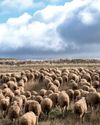
Muse Science Magazine for Kids
ANIMAL FIREFIGHTER TO THE RESCUE
Can animals help manage the risks of deadly wildfires?
3 mins
Muse July 2025: The Story Behind Wildfires

Muse Science Magazine for Kids
FIRE DANGER
WHY THE RISK OF WILDFIRES KEEPS GROWING
4 mins
Muse July 2025: The Story Behind Wildfires
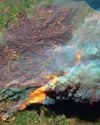
Muse Science Magazine for Kids
The Miller NEW Normal
WHAT TODAY’S WILDFIRES TELL US ABOUT OUR FUTURE
8 mins
Muse July 2025: The Story Behind Wildfires
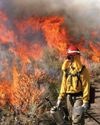
Muse Science Magazine for Kids
WOMEN AND FIREFIGHTING: A GOOD FIT
Jessica Gardetto is a firefighter. Her father was, too. “I grew up with my dad coming home smelling like wildfire and covered in soot,” she says.
1 min
Muse July 2025: The Story Behind Wildfires

Muse Science Magazine for Kids
What is happening on your fingertips when they get all wrinkly in a hot tub?
—Felix G., age 10, Montana
1 mins
Muse July 2025: The Story Behind Wildfires

Muse Science Magazine for Kids
WHEN the SMOKE CLEARS
THE LINGERING EFFECTS OF THE RECENT PACIFIC PALISADES AND ALTADENA EATON FIRES
6 mins
Muse July 2025: The Story Behind Wildfires

Muse Science Magazine for Kids
PICKING TEAMS
Keep it fair with a strategy that relies on geometry.
2 mins
Muse July 2025: The Story Behind Wildfires

Muse Science Magazine for Kids
SHAN CAMMACK
WILDLIFE BIOLOGIST AND FIRE SAFETY OFFICER
3 mins
Muse July 2025: The Story Behind Wildfires
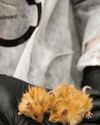
Muse Science Magazine for Kids
Scientists Create Mice With Woolly Mammoth-Like Fur
RESEARCHERS AT A COMPANY IN TEXAS ARE WORKING TO CREATE A LIVING ANIMAL THAT RESEMBLES THE EXTINCT WOOLLY MAMMOTH. Recently, they produced mice with traits of the large mammal. The mice all have coats with mammoth-like fur, and some of the small mammals also have genes that help them store fat. Both features would help the animals survive in the cold Arctic, where the woolly mammoth once lived.
1 min
Muse July 2025: The Story Behind Wildfires
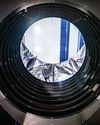
Muse Science Magazine for Kids
Cool Sunshade Added to the Nancy Roman Space Telescope
THE NANCY ROMAN SPACE TELESCOPE IS A NEW TELESCOPE THAT NASA IS BUILDING AND WILL LAUNCH INTO SPACE, LIKELY IN EARLY 2027.
1 min
Muse July 2025: The Story Behind Wildfires
Listen
Translate
Change font size
